Early (Realist) Works:
"The son of a Dutch Protestant pastor, van Gogh believed he
had a religious calling and did missionary work in the slums
of London and in the mining districts of Belgium.
Repeated professional and personal failures brought him
close to despair. "
- Gardner's
Art Through The Ages,
11th edition, Vol. II, p. 916
The Potato Eaters
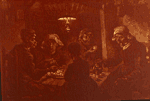
The Japanese Influence:
The Bridge in the Rain
- copy of a Japanese print
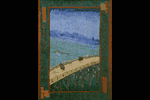
Almond Blossoms
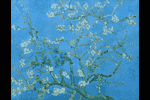
"Today, van Gogh's work stands as an important contribution
to the development of an expressionist art, and it has
deeply influenced generations of artists. Although
monetary value does not necessarily reflect artistic value,
it is worth considering that in recent years, van Gogh's
paintings consistently have brought the highest prices at
auction. In 1987, Sunflowers (1888) sold for #39.9
million to a Japanese insurance company. The following
year, Irises (1899) [not the one pictured below] was
purchased for $53.9 million by Alan Bond, and Australian
brewing and real estate tycoon. (Bond eventually
defaulted on the payment for the painting, and the J. Paul
Getty Museum in Los Angeles subsequently bought the work.)
In 1990, Portrait of Dr. Gachet (1890) was sold to Ryoei
Saito, a Japanese paper manufacturing magnate, for $82.5
million, the most ever paid for an artwork [until a painting
by Picasso sold
for
$104 in 2004].
... It is sobering to think an artist who has had such a
dramatic impact on the direction of art and on the general
public died thinking himself a failure."
- Gardner's
Art Through The Ages,
11th edition, Vol. II, p. 917
Irises
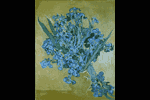
Late Works:
"Although the image of van Gogh as a madman persists in the
public imagination, van Gogh is better described as a
tormented individual who suffered from epileptic seizures.
Only after he turned to painting did he find a way to
communicate his experiences. "
- Gardner's
Art Through The Ages,
11th edition, Vol. II, p. 916
Self-Portrait
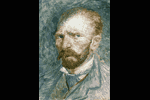
"For van Gogh, the power to create involved the expressive
use of color. As he wrote to [his brother] Theo:
'Instead of trying to reproduce exactly what I have before
my eyes, I use color more arbitrarily so as to express
myself forcibly.' In another letter, he explained that
the color in one of his paintings was 'not locally true from
the point of view of the delusive realist, but color
suggesting some emotion of an ardent temperament."
- Gardner's
Art Through The Ages,
11th edition, Vol. II, p. 916
The Bedroom at Arles
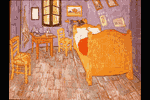
Wheatfield with a Reaper
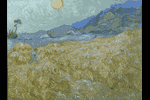
Undergrowth
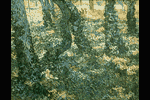
"Van Gogh's insistence on the
expressive values of color led him to develop a
corresponding expressiveness in his paint application.
The thickness, shape, and direction of his brush strokes
created a tactile counterpart to his intense color schemes.
He moved the brush vehemently back and forth at right
angles, giving a textilelike effect, or squeezed dots or
streaks onto his canvas from his paint tube. This
bold, almost slapdash attack enhanced the intensity of his
colors."
- Gardner's
Art Through The Ages,
11th edition, Vol. II, p. 916
Ears of Wheat
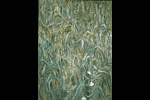
"When van Gogh died of a self-inflicted gunshot wound in
1890 at the age of 37, he considered himself a failure as an
artist. He felt himself an outcast not only from
artistic circles but also from society at large. The
hostile reception to his work, both from fellow artists and
the general public, no doubt reinforced this perception.
Throughout his brief career, he encountered great difficulty
selling his work; indeed, he sold only one painting during
his lifetime."
- Gardner's
Art Through The Ages,
11th edition, Vol. II, p. 917
Crows Over Wheat Field
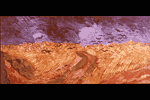
|